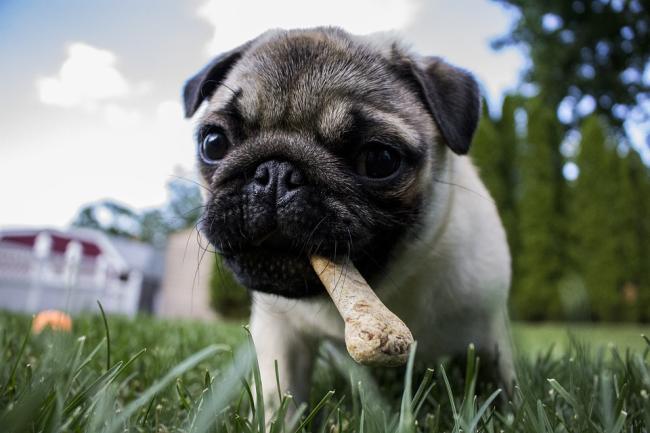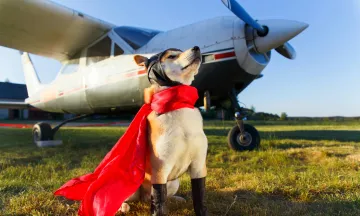It’s any pet lovers dream to get a new puppy. But when the little one finally arrives in all their fluffy glory, it isn't always a walk in the park! There's some basic rules to remember to make sure that your pup settles in super well and stays safe
We chatted to star Pawshake sitter Concetta, who recently welcomed Marceline the Bichon Frise x Cocker Spaniel pup into her home (check out the photo below, aren't they cute together?!). Concetta has been spending plenty of time with her new ball of love and has some fabulous first-hand experience to offer on how to puppy-proof your home.

1. Puppy pads.
This is a total essential with a new puppy.
“We take Marcy over to the pad a little while after she eats or drinks, and say ‘toilet’ until she pees. We always reward her immediately if she pees there (with lots of praise and a treat). This isn’t an exact Science - we never punish her if she pees on the floor, but we just keep a close eye on her. She always walks in a circle before she pees - this is how we know to take her to the pad.”
Like any training, this takes time and patience, so don’t give up!
2. Keep chewable items out of reach.
“This might seem obvious, but pick up any items your pup could choke on - when they start chewing, they’ll eat anything!” This could include anything from power cords, shoes, to small plants and anything on low tables they could reach.
Also be mindful of the cleaning products you use and if chemicals are kept in the house, keep them well out of reach of those curious little teeth.
3. Keep introductions slow and calm.
“If you already have another dog (like we do, beautiful Benson), introduce them slowly - we let them sniff and meet each other slowly, and let them play. We are having them sleep separately at first, because we don’t want to leave them alone together unsupervised this early on. They are getting along great though, Benson is being really gentle with Marcy.”
It’s also important to remove all items your first dog may be protective of such as toys or food - your dog might react aggressively or protectively to the new dog, even if they have never shown this behaviour before. Better safe than sorry with your furry friends!

4. Setting boundaries.
It’s important to teach your pup early where they are and aren’t allowed in the house. Be sure to block off any areas they cannot go.
“The dogs aren’t allowed in the bedrooms, so we keep the doors closed at all times. It’s hard to remember to close the doors all the time, so I’ve left a note on my door to remind me. There’s way too much chewable stuff in the bedrooms, and we want to keep the dogs safe!”
For extra peace of mind, you can also put in doggy gates or doors (especially for smaller dogs) between rooms if that makes life easier.
5. Teaching independence.
One of the toughest parts of getting a new puppy is teaching them to be comfortable when alone. We created a guide for dealing with separation anxiety, but hopefully with a calm, consistent approach this can be avoided in the first place.
“Marcy’s room is the laundry - we have his bed and toys in there, and we are slowly training him to be by himself by leaving him in there for short periods of time, while we are home. We only go in and praise him when he has been quiet for a few moments. If he whines, we leave him until he stops or say ‘no,’ then when he is quiet , we praise and reward him.”

This can be the most challenging part of puppy ownership. A young puppy who is whining can break your heart, but consistency and patience is better for their wellbeing in the long run. Separation anxiety is devastating for both pups and owners, and training them early nips this in the bud and ensures a happy time for your pet and you.
And remember, if you're having a tough time and need a helping hand in those first few months, a friendly Pawshake pet sitter or dog walker is never far away.
Do you have any more great tips or new-puppy stories? Contact us on Facebook with your pics and anecdotes!




